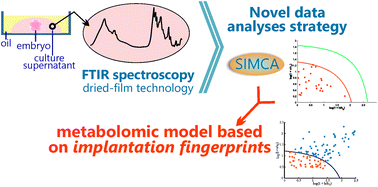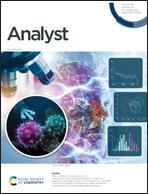A robust metabolomics approach for the evaluation of human embryos from in vitro fertilization†
Abstract
The identification of the most competent embryos for transfer to the uterus constitutes the main challenge of in vitro fertilization (IVF). We established a metabolomic-based approach by applying Fourier transform infrared (FTIR) spectroscopy on 130 samples of 3-day embryo culture supernatants from 26 embryos that implanted and 104 embryos that failed. On examining the internal structure of the data by unsupervised multivariate analysis, we found that the supernatant spectra of nonimplanted embryos constituted a highly heterogeneous group. Whereas ∼40% of these supernatants were spectroscopically indistinguishable from those of successfully implanted embryos, ∼60% exhibited diverse, heterogeneous metabolic fingerprints. This observation proved to be the direct result of pregnancy's multifactorial nature, involving both intrinsic embryonic traits and external characteristics. Our data analysis strategy thus involved one-class modelling techniques employing soft independent modelling of class analogy that identified deviant fingerprints as unsuitable for implantation. From these findings, we could develop a noninvasive Fourier-transform-infrared-spectroscopy–based approach that represents a shift in the fundamental paradigm for data modelling applied in assisted-fertilization technologies.

- This article is part of the themed collection: 150th Anniversary Collection: Metabolomics


 Please wait while we load your content...
Please wait while we load your content...